Before the Tectonic Crossroads conference two weeks ago, I had the good fortune to participate in a Istanbul-to-Ankara geology field examining the Tavşanlı Zone, a tectonic suture zone where a portion of the Tethys Ocean basin closed. This paleo-convergent boundary is marked by a suite of interesting rocks, including blueschists, ophiolites, and eclogites. I’d like to share with you some of the things I saw along the trip.
This is one of the trip leaders, Aral Okay (pronounced “Oh-kai,” okay?), discussing the general geology of the area at our first stop. (The other trip leader was Donna Whitney.)
I think in general, you can make out the east-west trend of the rock units on Aral’s map (where they aren’t obscured by alluvium). This reflects the approximate north-south convergence of the Tethys closure in Turkey. To visualize this, I’d like to call your attention to a paleogeographic interpretation of the Tethys Ocean from Ron Blakey, the talented mapmaker from Northern Arizona University:
See all those colliding east-west-oriented crustal fragments in the northwestern Tethys? Those are the pieces that will comprise future Turkey. As you can imagine, rocks caught up in these tectonic collisions got both deformed and metamorphosed. Some of them were even subducted to ~80 km depth, and then brought back up to the surface! At our first stop, we saw some blueschist-grade rocks that had a phyllitic texture. Here’s two of them:
As usual, my eye was drawn towards the structures visible in these rocks. Here are a couple of nice little folds:
(The Turkish 1-lira coin is the same size as a U.S. quarter.)
I found this to be an interesting portion of the outcrop:
That’s green phyllite on the left, and blue phyllite on the right. Allow me to annotate it for you:
“Blueschist” and “greenschist” refer to two assemblages of minerals which supposedly represent different combinations of temperature and pressure. They are examples of metamorphic “facies,” as illustrated in this image:
Image redrawn and modified by me from Figure 3 of Bousquet, et al. (2008), which is itself modified from Oberhänsli, et al. (2004), and also from University of British Columbia (1997), which is modified from Yardley (1988).
Theoretically, blueschists and greenschists should be forming at different combinations of pressure and temperature. Blueschist forms at high pressures, but relatively low temperatures. But here we have an outcrop of blueschist that is right adjacent to a greenschist (medium temperature and pressure), with no faulting in between. It was suggested to me by a blueschist expert that this was likely a reflection in differences in the initial composition of the protoliths. I found this explanation less than completely satisfying, but there was no time to discuss, for we were being called back to the bus, already gunning its engine and ready to roll down the road.
At our second stop, we found some metamorphic rocks that showed clear textural evidence of having had pyroclastic protoliths:
There were lots of chunky bits in there.
So it wasn’t just pelitic (muddy) rocks that were getting metamorphosed in this Tethyan suture zone, but volcanic rocks too!
More later… when we move on to stop #3…

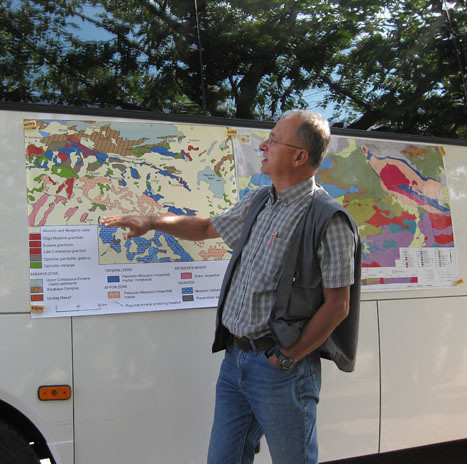
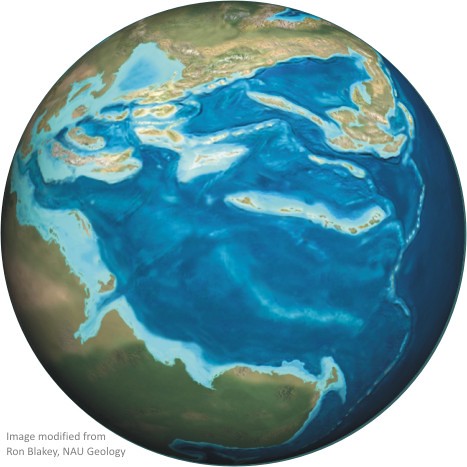
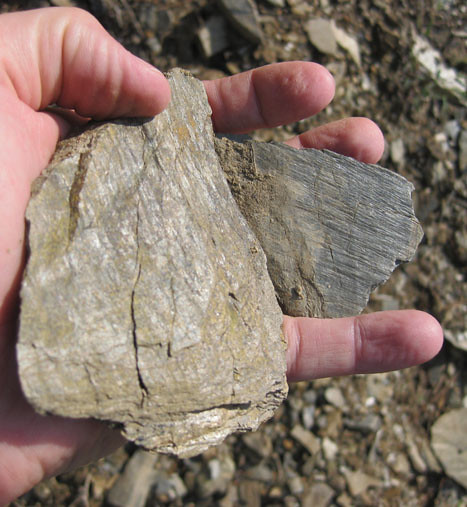
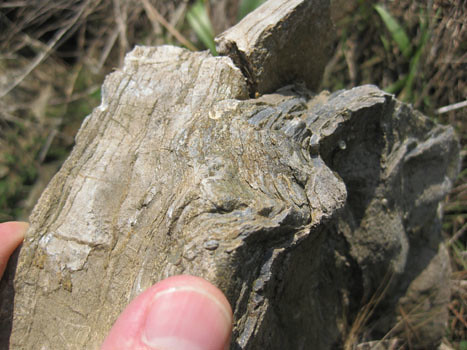
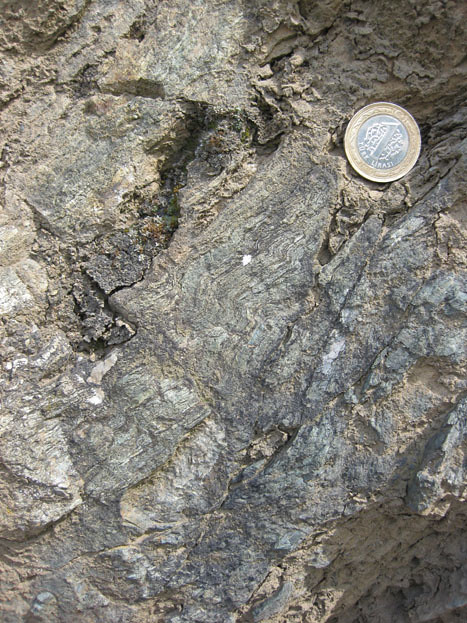





The “compositional differences” argument is also invoked for the juxtaposed blueschists and eclogites at Jenner, California (e.g., Blueschist/Eclogite Deskcrop). Doesn’t seem unreasonable to me, though I also haven’t explored the literature on it.
If I don’t come back and try to explain this in a couple hours, remind me (via Twitter or e-mail). Short answer: bulk composition differences are probably the explanation, but without knowing exactly which green minerals are in your “greenschist,” it’s hard to give you a precise answer. (Shorter answer: blueschist-facies rocks aren’t necessarily blue.) And I might need to draw diagrams, which would require dusting off my blog.